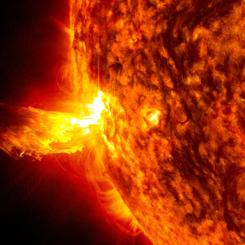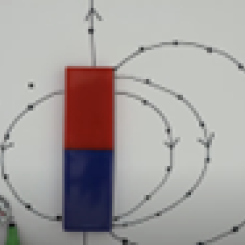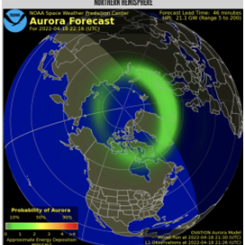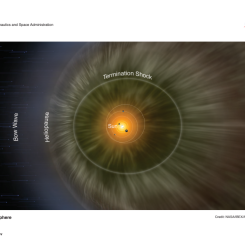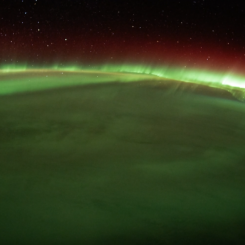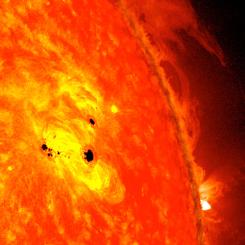Lesson Plans
Coronagraph Flipbook
Overview
In this activity, learners will explore an additional tool used to observe the Sun’s atmosphere, called a coronagraph. Learners will create a flipbook of a coronagraph showing a coronal mass ejection.
Materials Required
- Coronagraph Flip Book Handout
- (1) medium binder clip
- scissors
Procedure
Remember to never look directly at the Sun without proper safety equipment.
Context:
An important instrument that heliophysics missions use is a coronagraph. Coronagraphs are equipped with a metal disk that blocks the bright light of the Sun’s photosphere and makes it possible to study the detailed features of the surrounding corona, which is the outer atmosphere of the Sun. Otherwise, the Sun is too bright to view the corona. This mimics a total solar eclipse. When the Moon blocks the bright light of the Sun, it gives scientists a unique opportunity to study the Sun’s corona.
Watch:
Show learners the short video, Highlights from SOHO's 20 Years in Space, which shows images from SOHO’s coronagraph and extreme ultraviolet telescope.
Note:
- The coronagraph in the video has a white ball in the middle representing the hidden Sun behind the opaque blue circle, which is the result of the metal disk (occulting disk) used to block out the light of the photosphere.
- The result of a coronagraph is images of the Sun’s atmosphere, the corona, represented by the blue region.
- In the blue region we can see the solar wind (white light).
Create:
Direct learners to the Coronagraph Flip Book Handout.
- Tell learners they will create a flipbook using coronagraphs taken of a solar eruption, called a coronal mass ejection (CME), that occurred in 2000. CMEs are energetic bursts of particles triggered by the release of magnetic energy on the Sun.
- Just like the image in the video, colors are added to the coronagraph to communicate information. The occulting disk is the dark, brownish-red circle in the center of the coronagraph image, and the outline of the Sun, which is behind the disk, is a faint, thin outline of a brighter circle in the center of the darker circle. The corona is represented by bright yellow-orange.
- Steps
- Cut out the images.
- Put the images in order.
- Clip the images together using the binder clip.
- Flip through the book to see a CME in action!
Reflect:
- How is a coronagraph like a total solar eclipse?
- Allow time for learners to share their answers.
Teachers who are interested in receiving the answer key, please complete the Teacher Key Request and Verification Form. We verify that requestors are teachers prior to sending access to the answer keys as we’ve had many students try to pass as teachers to gain access.
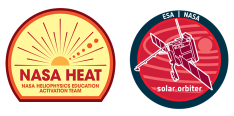
Disciplinary Core Ideas:
- PS1A: Structure and Properties of Matter
Crosscutting Concepts:
- Cause and Effect
Science and Engineering Practices:
- Developing and Using Models
- Students will be able to identify how different NASA missions study the Sun.
- Students will be able to describe what a coronagraph is and how it takes images of the Sun.
- Students will be able to recognize different features of the Sun.
- What part of the Sun do coronagraphs look at?
- Why are scientists interested in studying the Sun’s corona?
- Why do NASA missions use multiple methods to study the Sun?
Students may think they can look directly at the Sun. It is NOT safe to look directly at the Sun without proper safety equipment.
- Color Printer

